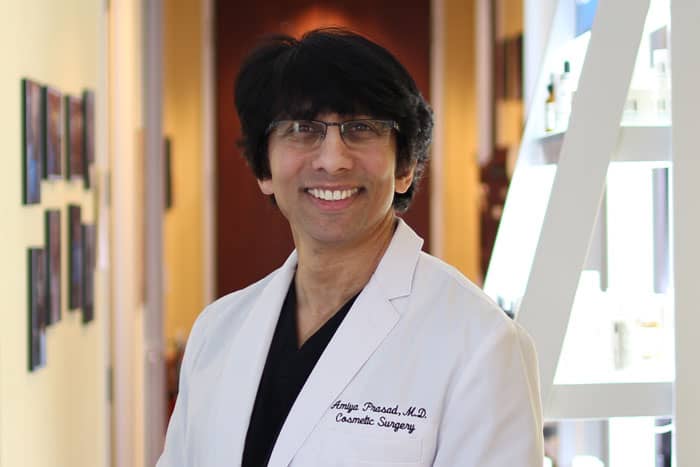When people ask which tear trough filler produces the best results, that question can’t be answered by the brand of filler. The results of tear trough filler treatment are determined by the doctor who administers the filler, as the brand of filler does not prevent issues such as overfilling, underfilling, or even rare but dangerous complications such as vascular occlusion when filler is injected into an artery, which can cause tissue death or even blindness. The results of filler treatment, and avoiding complications are in the hands of the doctor.
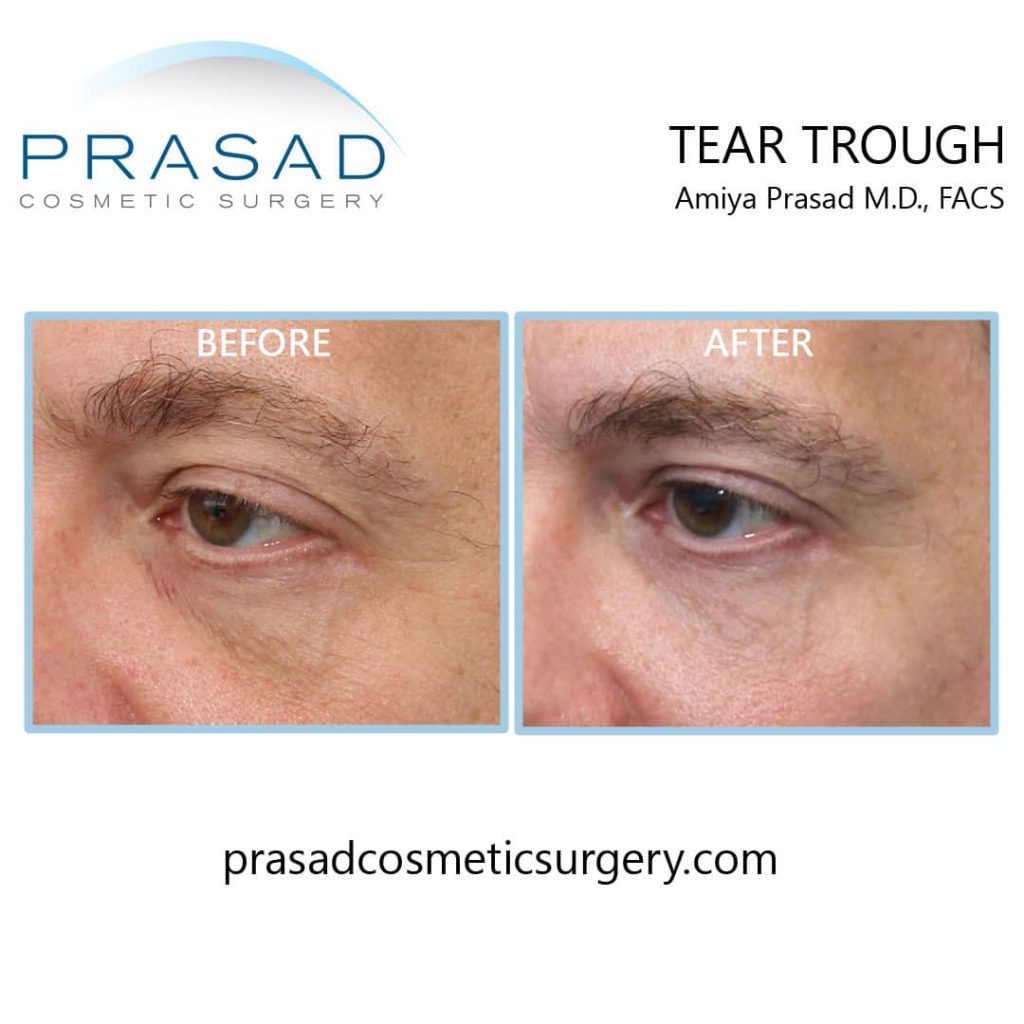
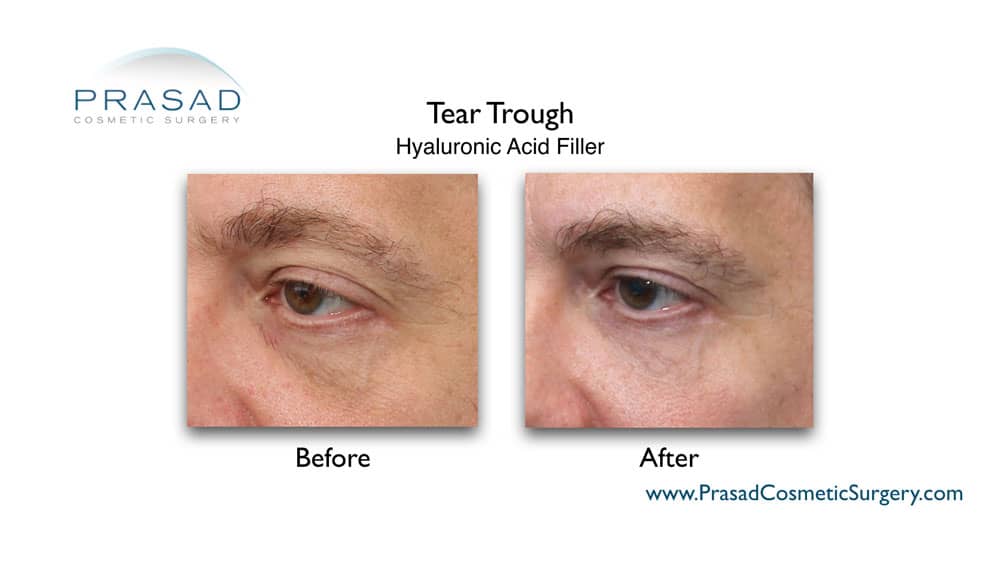
To illustrate this point, two doctors can use the same brand and viscosity of filler, but the results will be different because doctors have different levels of experience, preferences for placing the filler with a needle or cannula, and aesthetic styles. With experience and knowledge with eye anatomy, one doctor may be able to avoid or treat vascular occlusion more effectively than the other, therefore the doctor determines filler results and the safety of the treatment, not the brand of filler. When an under eye filler should be used is also determined by the doctor’s experience and expertise.
What is Tear Trough Filler?
Tear trough fillers can treat under eye hollowness and, in rare cases, puffy eye bags. Hollowness under the eyes is frequently caused by a lack of volume in the lower eyelid. Hyaluronic acid fillers are ideal for treating hollowness because they can be injected into the skin in minutes, without requiring surgery. Fillers can treat some cases of eye bags by filling and reducing the depth of the adjacent tear trough, creating a transition to the puffiness that conceals the eye bags.
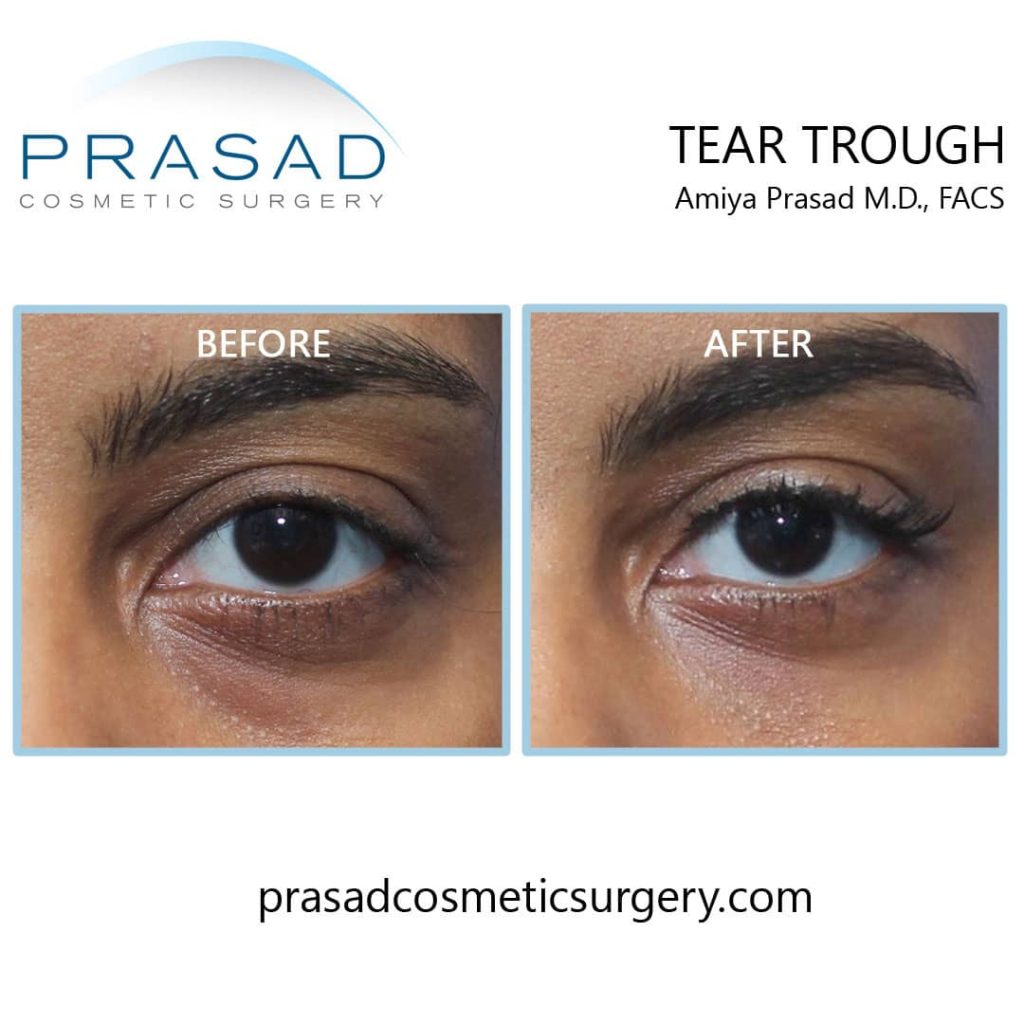
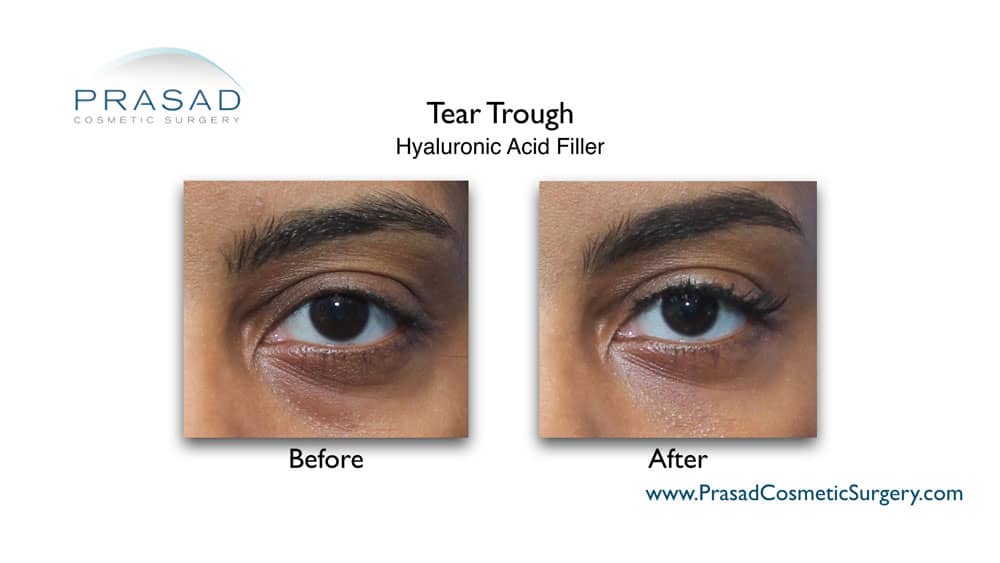
Some doctors who don’t perform surgery will insist that a filler can treat all cases of eye bags, but if eye bags exceed a certain threshold, the filler can make them look puffier and,more prominent, so lower blepharoplasty is more appropriate to sculpt and remove the fat that causes the eye bags.
What filler is used for tear trough?
Filler material does matter when it comes to safety. Hyaluronic acid is my preferred material for patient safety and predictable results. The majority of injectable fillers used today are made of hyaluronic acid, a naturally occurring substance in the body that is used to retain moisture and water in the skin, as well as to lubricate joints. Since hyaluronic acid occurs naturally in the body, it is easily accepted by the body and does not cause allergic or foreign body reactions.
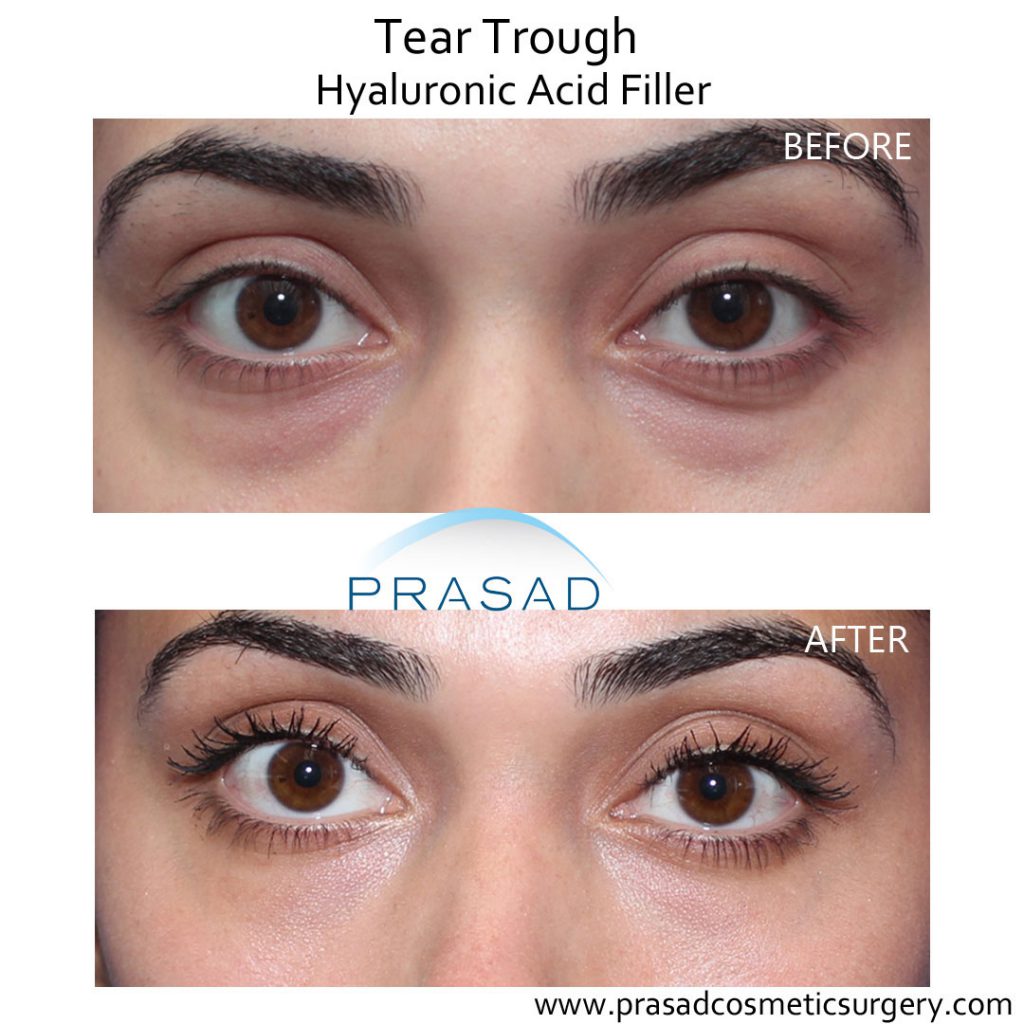
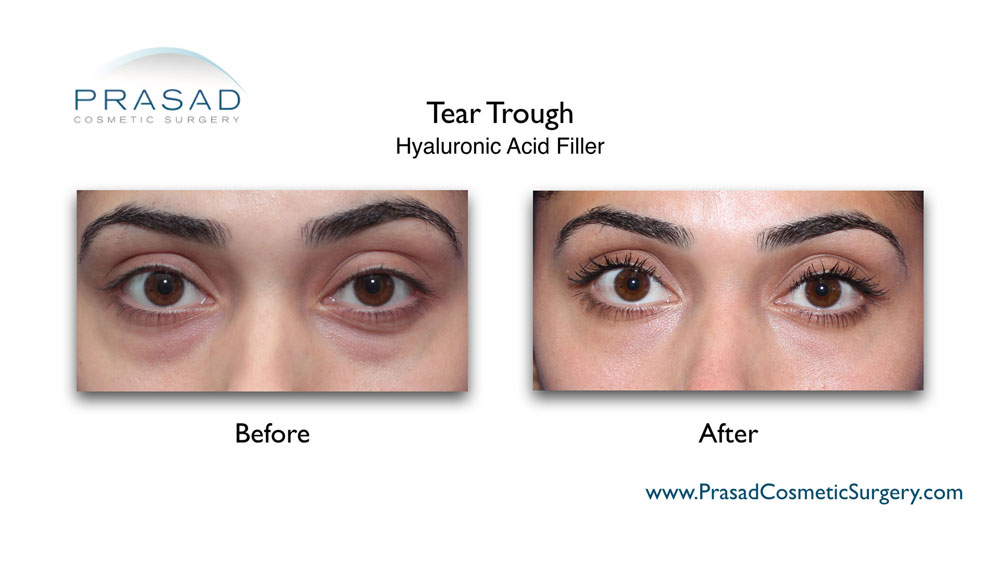
Permanent and Semi-Permanent Fillers
Many people seek another filler material besides hyaluronic acid because they feel the material doesn’t last long enough. This is a good thing because fillers should be metabolized safely by the body. Permanent and semi-permanent fillers such as those made of polyacrylamide resist metabolization by the body, which can cause infections or a foreign body reaction, resulting in swelling and visible complications.
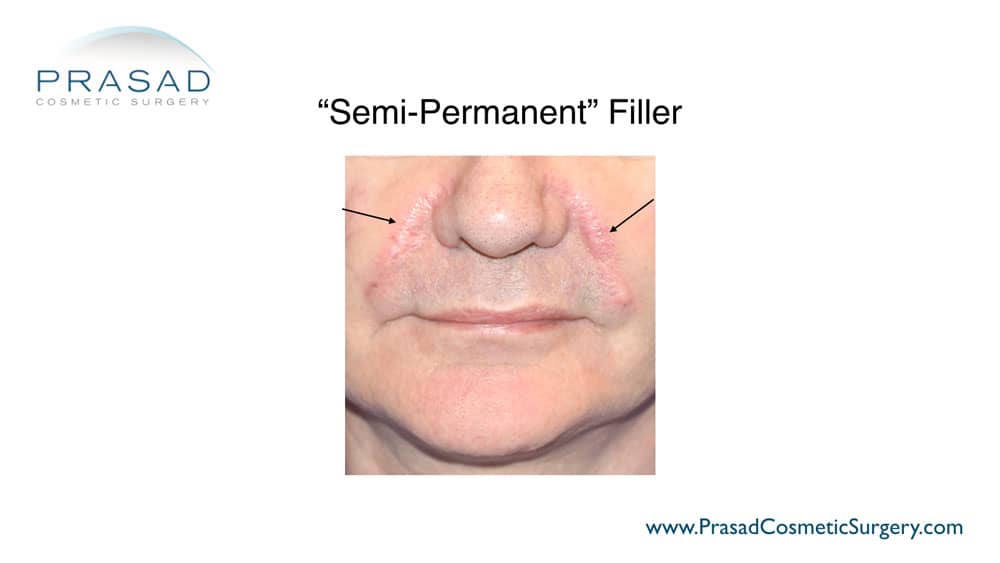
Furthermore, permanent and semi-permanent fillers can disintegrate in the body without being metabolized, allowing them to migrate to other areas in small pieces. Permanent and semi-permanent fillers must be removed surgically, but surgery may not remove all of the material if it migrates to deeper areas, and surgical removal risks structural damage.
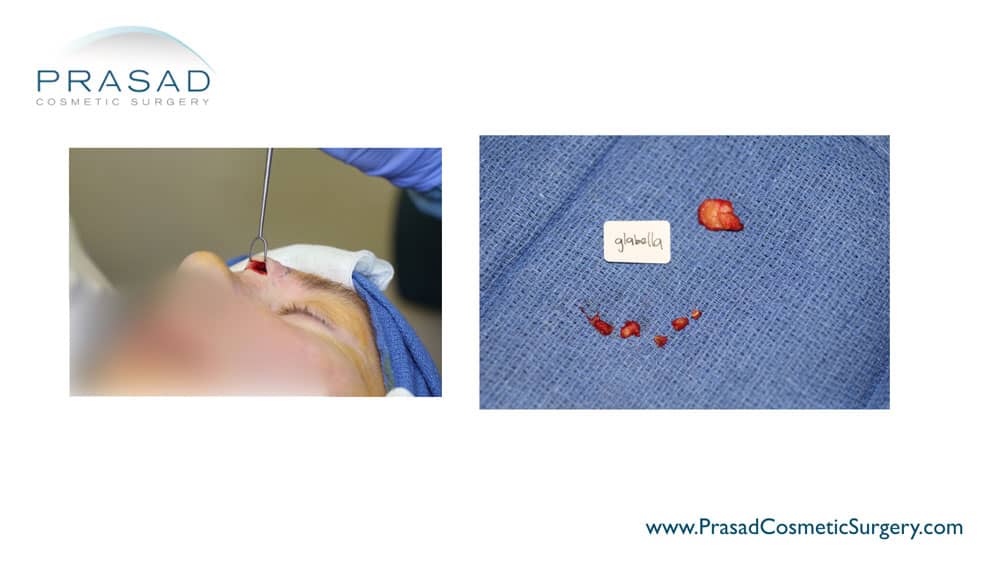
Hyaluronic Acid Filler for Tear Trough
In contrast, hyaluronic acid fillers can be dissolved with the injectable enzyme hyaluronidase. Hyaluronidase is also a naturally occurring enzyme in the body that aids in the constant turnover of native hyaluronic acid. Even if hyaluronic acid fillers last longer than expected due to encapsulation, hyaluronidase can be injected directly into the encapsulation to dissolve the material without requiring surgery.
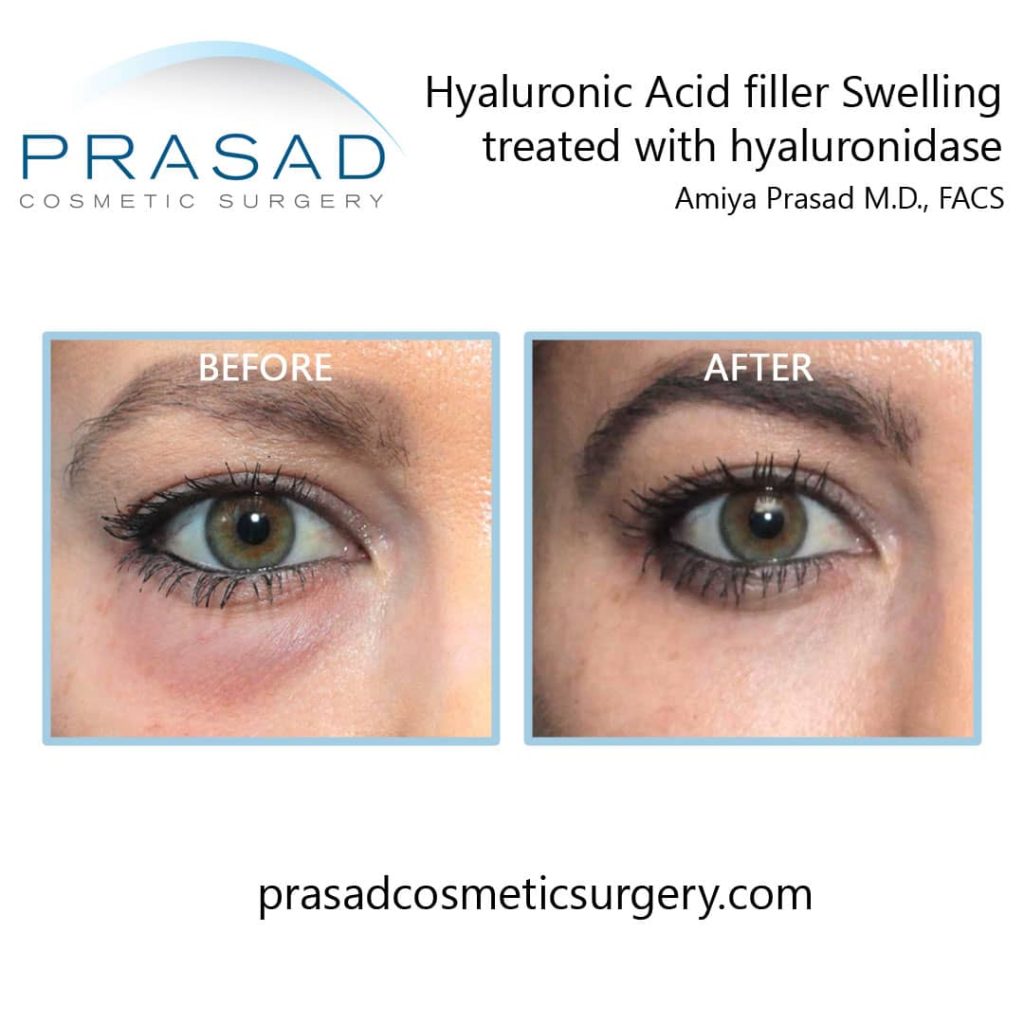
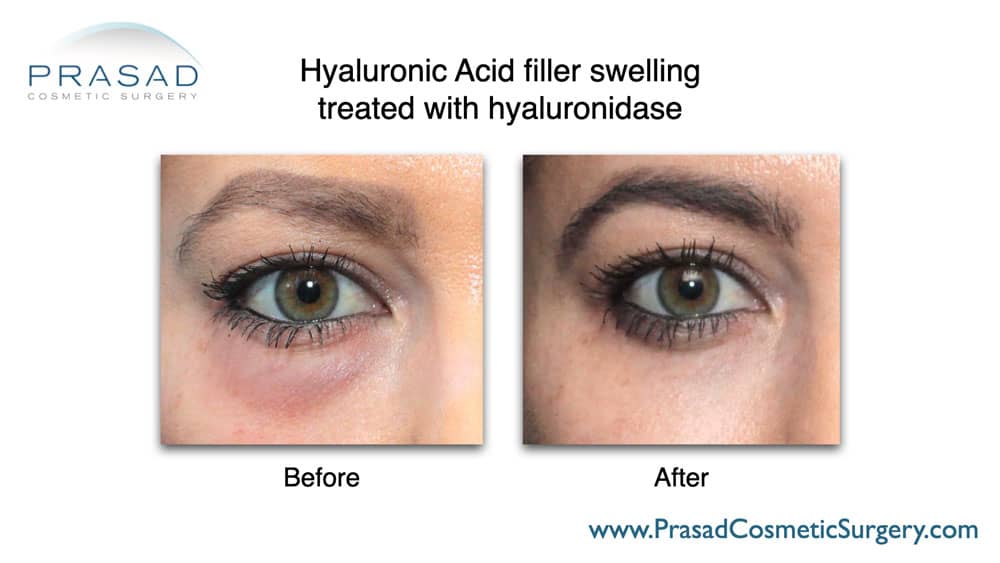
Under-eye filler safety should be discussed with prospective doctors ahead of time. Many doctors do not even perform injectable treatments in the eye area because it is a highly delicate region that can affect a patient’s vision, so they may not trust their own hands to do it safely, and they are not trained to deal with emergencies like vascular occlusion.
With hyaluronic acid being the safest and most predictable filler material, the viscosity or thickness of the filler is an important consideration. The under eye area goes through a lot of facial movement, as the eyes are important for facial expressions. A softer, less viscous filler is needed to match facial movement and expressions, so I usually choose fillers like Juvederm XC or Restylane-L for the under eye area, but other hyaluronic acid fillers with similar viscosities also work well under the eyes, depending on the individual doctor’s preference.
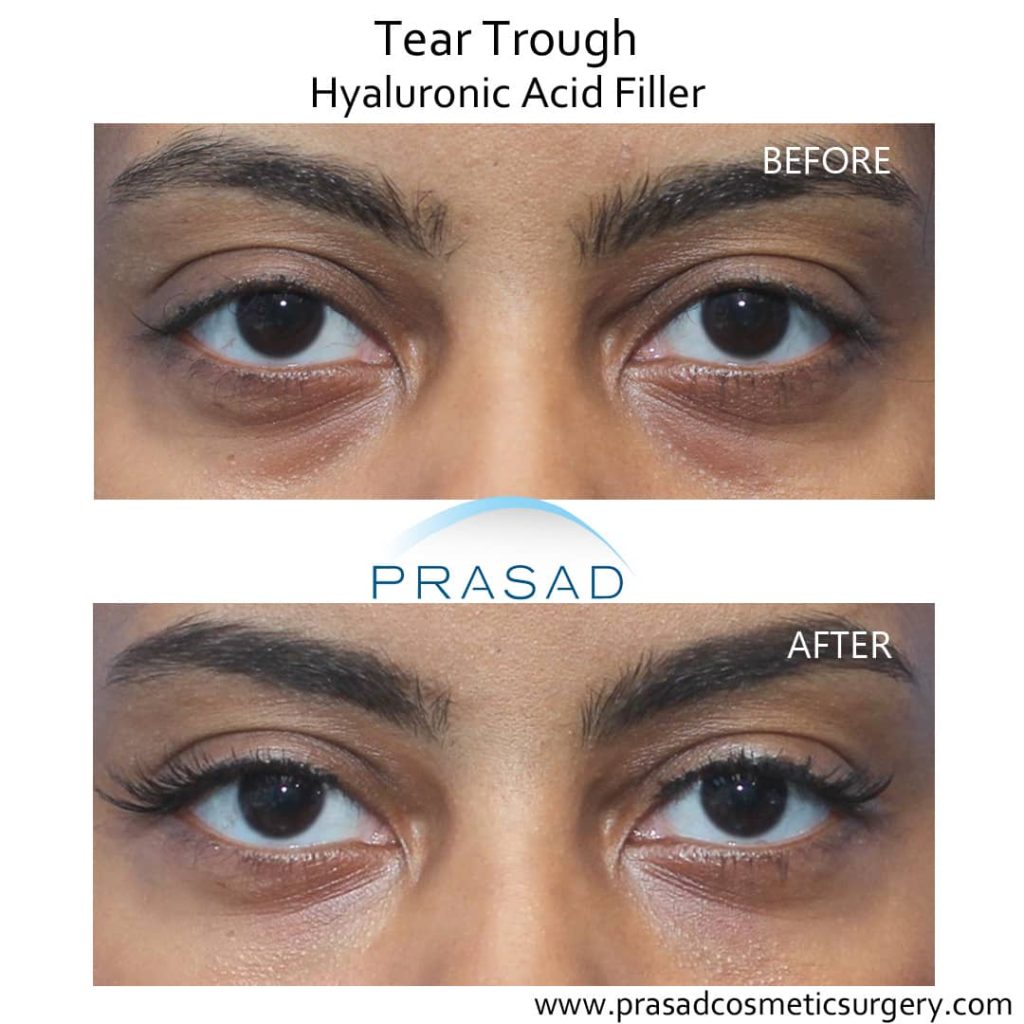
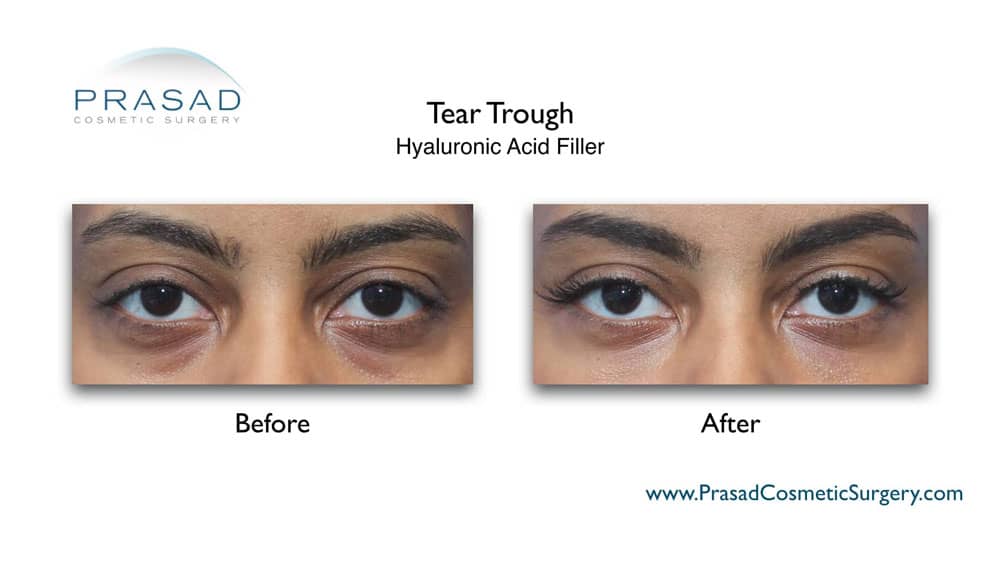
How long does tear trough filler last?
Generally, the thicker the filler, the less malleable it is for facial movement, but it also lasts longer. Softer fillers that work well under the eyes last about a year. Thicker fillers, such as Juvederm Voluma, can last up to two years, but they don’t move well with facial expressions,and are best used in areas with little to no movement, such as the cheeks, chin, and jawline.
Under Eye Fat Grafting
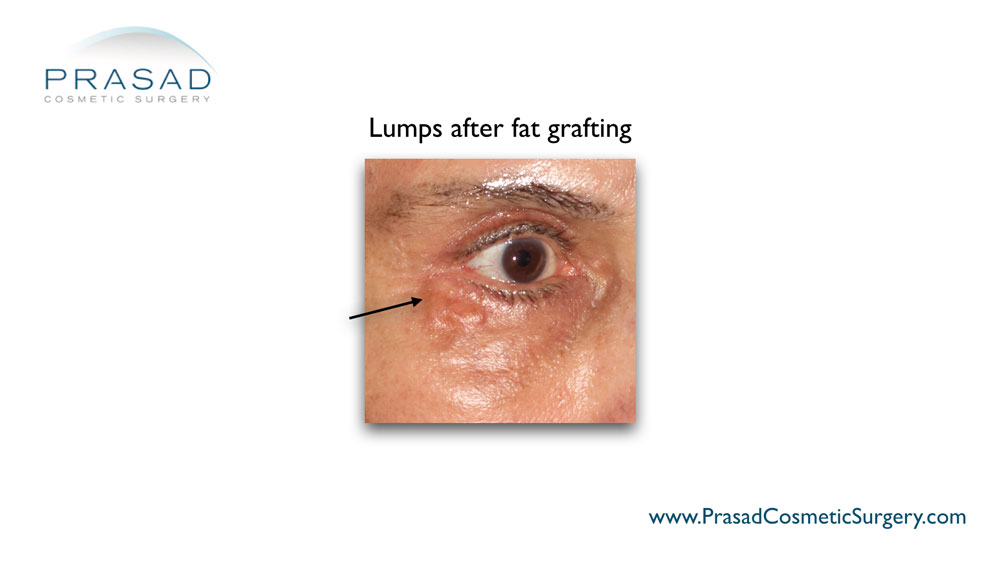
Bruising
There is a risk of temporary bruising with under eye filler treatment if a blood vessel is struck by the needle or cannula, but the bruising is temporary. To avoid bruising in my patients, I approach injectable treatments with the same caution that I do surgery. Temporary bruising usually lasts no longer than a week.
While the placement of under eye fillers only takes a few minutes and can be done during the lunch hour, I still follow up with my patients after their treatment. I see patients two weeks after filler treatment to see how the material has settled and if any additional enhancement is required. I prefer to start with a more conservative filler placement and then see how the results look once it has settled. It is always preferable to be more conservative and add a little more during follow-up if necessary, rather than adding too much filler under the eyes, having to dissolve all of the filler material, and then starting the process all over again.
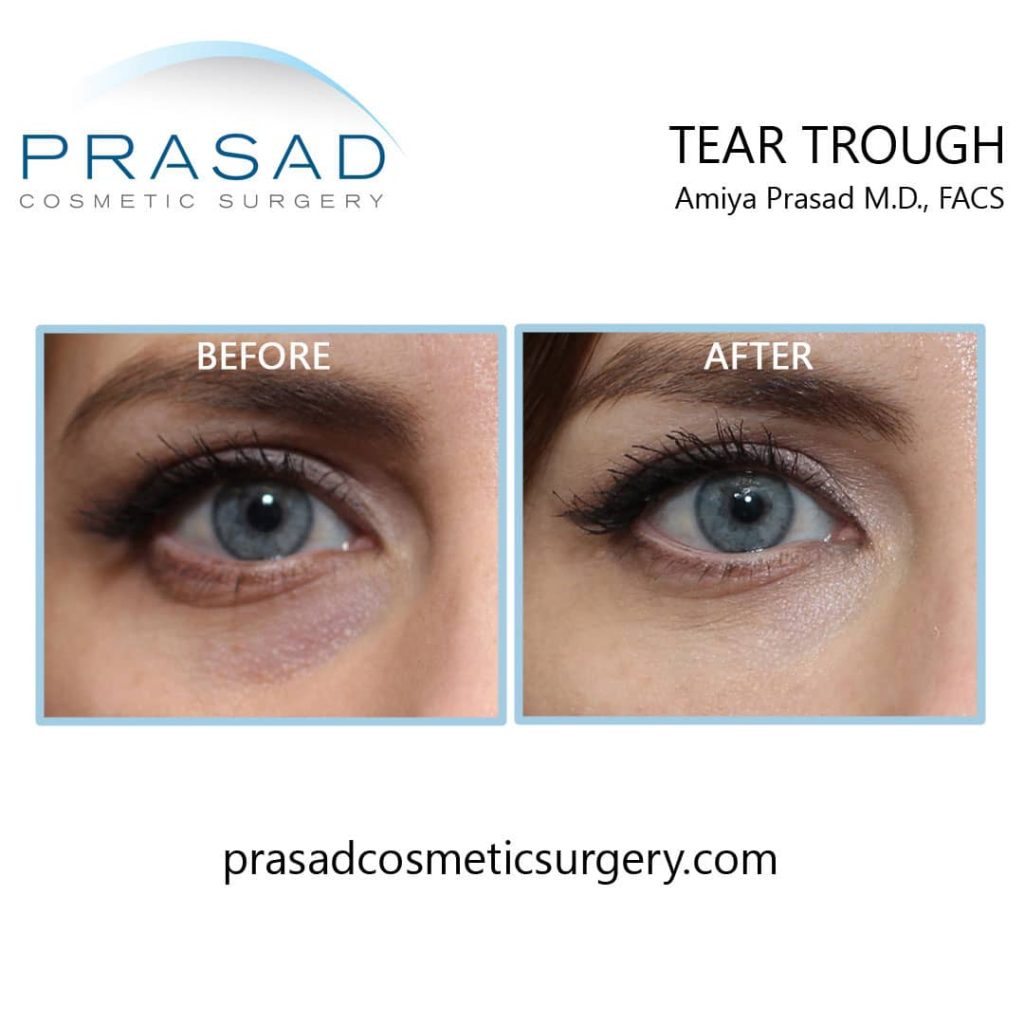
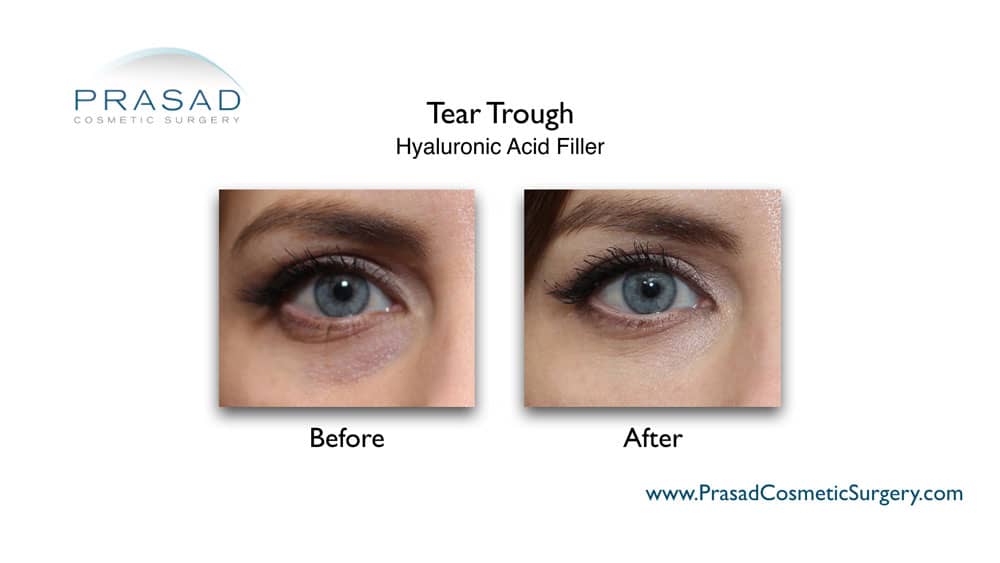
Tear Trough Filler NYC and Long Island, New York
Dr. Amiya Prasad administers tear trough fillers for under eye hollowness, and to camouflage slight to moderate cases of eye bags when the puffiness is not too prominent. He also performs tear trough fillers in combination with treatments like platelet-rich plasma, or PRP, to treat discoloration with accompanying hollowness. He is a Board-certified cosmetic surgeon and Fellowship-trained oculofacial plastic and reconstructive surgeon in practice for over 25 years in New York City and Long Island.
To schedule a consultation, fill out the form below or you may call any of our offices at (212) 265-8877 Manhattan, New York City or Garden City, Long Island at (516) 742-4636; or Vienna, Virginia at (703) 356-1336.

